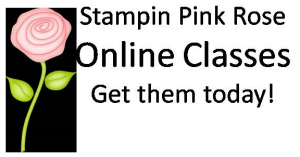Have you ever come across a term you were not sure of? If yes, this is your spot for Stamping words. Here is answer for those uncertain stamping words.
- A2 – This is the standard size for US-based cards. An A2 card is a letter-sized sheet of cardstock cut in half, for a finished size of 4.25″ by 5.5″ when folded. For more card information go to Stampin 101.
- Adhesives – A substance used to adhere things together. Types of adhesive include liquid, tape runners, double sided adhesives, and more. It is important to choose the right adhesive for your embellishments, and use enough adhesive to securely hold a card together. See Stampin 101.
- Aqua Painter- holds liquid for easy watercoloring. Comes with 2 brushes (medium and thick brush)
- ATG – Adhesive Transfer Gun. It’s a tool that dispenses double-sided adhesive. This is great if you do quantity.
- Baker’s Twine- a light string or strong thread composed of two or more smaller strands or yarn twisted, and then twisted together.
- Banners, and Badges – Banners, and Badges are graphics you can use to link to other sites.
- Big Shot– die cutting machine to be used with dies and embossing folders.
- Blender Pens- Dual-tipped pens filled with specialized solution for easier blending. See Technique Section for video.
- Blog – A blog (short for weblog) is your own spot on the internet where you can share whatever you like. Many crafters have blogs hosted on a specific site. I use WordPress has it is more flexible.
- Blog Hop – A Blog Hop is an online event during which a group of bloggers post links to each other’s posts. The reader starts at the first post and then hops from post to post using the links provided.
- Board – groups of “pins” on Pinterest on a topic.
- Bone Folder – Bone Folder or Burnisher: A flat piece of plastic or Teflon (yes, you can still buy them made from bone), round at one end and pointed at the other. It is used for scoring and folding paper, and burnishing
- Bow – Tying a cute bow on a card can sometimes be a challenge.
- Brayer – A brayer is like a paint roller for ink. See Technique Section
- Burnish – Burnish means to rub or smooth. It’s often used in the context of using adhesives. It is important to rub or press firmly to set the adhesive and keep the parts from coming apart. sEE nONE dOLDER.
- Cardstock – The foundation of our cards, cardstock is thicker than writing paper and comes in a variety of colors and textures.
- CAS – Abbreviation for Clean and Simple..
- CASE – Stands for “Copy and Share Everything.” The best inspiration for cardmaking comes from admiring other people’s cards.
- Chalk – Chalk is not just for chalkboards or sidewalks anymore. It can be used to color stamped or digital images, and add depth, detail, or distressing to your cards.
- Coloring Mediums – Cardmakers use a variety of mediums for coloring stamped. Some of these include chalk, colored pencils, watercolor pencils, and markers.
- Crimp – A crimper is a tool that operates like a clothes wringer, and wrinkles paper into a corrugated texture.
- Crop – In photography, crop means to cut away the unwanted part of a photo. Scrapbookers also use the word crop when cutting or punching pictures for albums.
- Complementary Color: Each primary color (red, blue, yellow) has a complementary (opposite) color made by mixing the other two (red and blue mix to purple, which is the complementary color to yellow, for example).
24. CS – Abbreviation for Cardstock
25. Design – Creating a beautiful card which can be done with sketches
26. .Die Cut – An image that has been cut or punched out of paper, chipboard or fabric into a desired shape
27. Distressing – Distressing adds an aged or weathered look. There are many distressing techniques, including sanding, sponging, and tearing or roughing edges.
28 DP or DSP – Abbreviation for Designer Paper or Designer Series Paper.
29. Easel cards – Fancy folded cards that stand “up” like an easel. These can be made in various shapes, but be sure you find a panel to write on! See Card Fold Tutorial27 Embellishment – Decorative elements added to cards, such as flowers, ribbons, or brads. Please be careful that your embellishments have sufficient adhesive. Also, avoid “lumpy” cards that might get torn up in deliver
30 .Embossing or Dry Embossing – Creating a raised pattern or image on paper by either rubbing with a stylus or using a tool such as a Big Shot. Debossing is the reverse, where the image is the indented portion.
31. Embossing Gun: A heating tool that directs hot air to a specific area. The hot air melts embossing powder, creating a slightly raised surface on the design.
32. Embossing Powder: A quick-melting, colored powder used to create a raised design in rubber-stamping. It is sprinkled on a wet, inked design, and then heated with a hot-air embossing gun which bonds the powder to the surface. Available in many colors and granulations.
33 , Envelopes – Every card needs the means to give or send the card.
34. Envelope Punch Board- a tool to create envelopes of different sizes.
35. Fold – The most common way to make an A2 card is to cut an 8-1/2″x11″ piece of cardstock in half and then fold it in half again. There are several other ways to fold cards or decorative elements for cards. See Card Fold Tutorials.
36. Glitter – flakes to add sparkle
37. Heat Embossing – A process in which a quick-melting powder is heated to create a raised design on paper or cardstock. See Technique for Tutorial
38. Heat and Stick Powder- Powder adhesive becomes sticky when heated to hold your glitter. See Tutorial Technique Section.
39. Ink – For stamping, ink comes in a variety of types. See Stampin 101 for types of ink descriptions
40. Liners – Adds interest to a card for the recipient
41.. Masking -Using paper to cover a portion of the card and keep it from being inked. See Tutorial under Techniques
42. Piercing Mat- a foam mat designed for piercing and cushions your Photopolymer stamps (see Stampin 101)
43. Paper Piercing – Creating a pattern in paper or cardstock with pierced holes. See Technique Tutorial Section
44. Pinterest – a photo sharing site in which images can be “pinned” for later reference to the site.
45. Punches -Punches are tools that cut paper into decorative shapes. See Stampin 101
46. Quilling – Creating decorative designs using rolled strips of paper.
47. Ribbon – Ribbon comes in a variety of textures and widths and is often used as an embellishment on cards. Some types of ribbon are: brocade, chiffon, grosgrain, satin, and taffeta.
48. Scoring – Pressing a groove into paper, usually to make it easier to fold. See Stampin 101
49. Score Board- A scored plastic board with measurements on it, for creating measured scores in papercrafts.
50. Sketch – A sketch is a suggested design for a card, providing general elements and their placement on a card. Many cardmakers like to keep a sketchbook for inspiration and handy reference. See Sketches Section.
51. Sponge Daubers- Daubes touches ink on stamps or directly on projects. See Technique Section for Tutorial.
52. Stamp-a-ma-jig- tool that allows you to line up your rubber stamps so you can precisely place the image.
53. Unmounted Stamps – Most rubber stamps are sold already mounted on a wooden base. Unmounted stamps are meant to be used with an acrylic block. See Stampin 101 for explanation.
54. Versamark- Creates tone-on-tone or watermark effects. Use with Heat Tool. See Technique Tutorial’s Section.
55. Vellum – Semi-translucent paper similar to parchment.
56. Watermark – In the context of online photographs, a watermark is a statement of the name and/or web address of the creator to let viewers know that the card was created by that person.
57. Wink of Stella Glitter-pen for accenting stamped images. Acid-free. Comes in Clear Gold.











